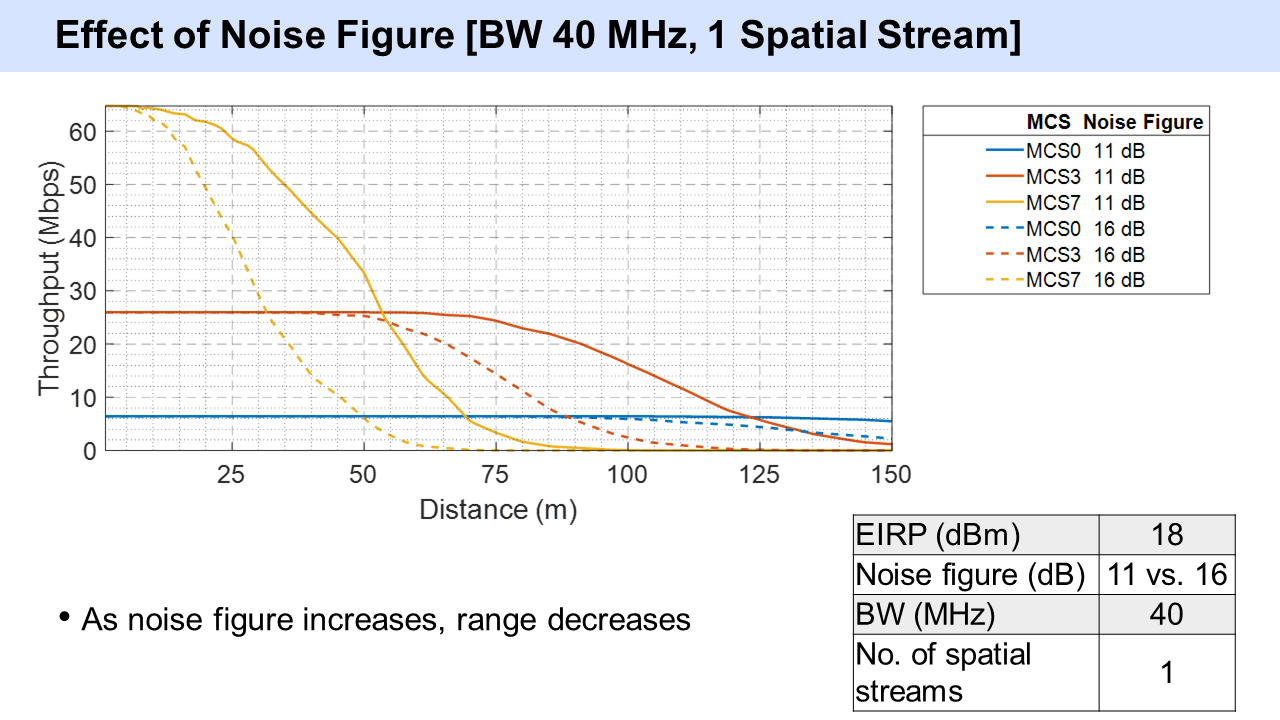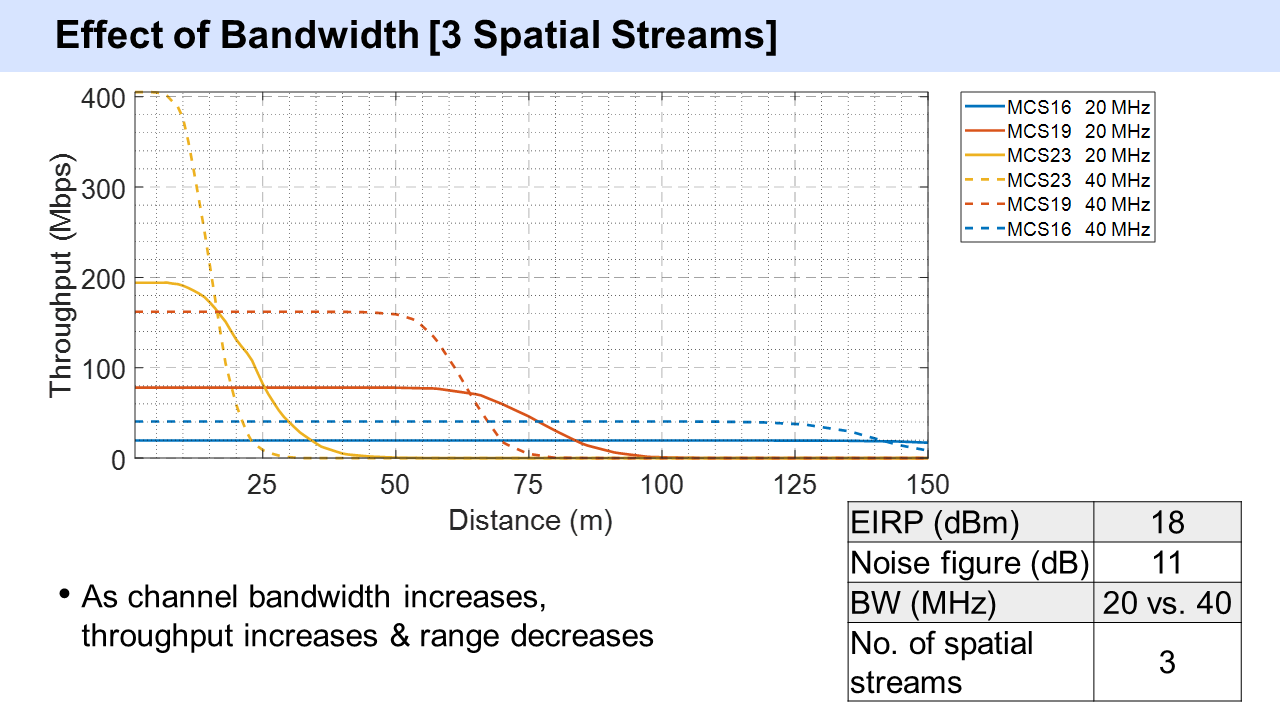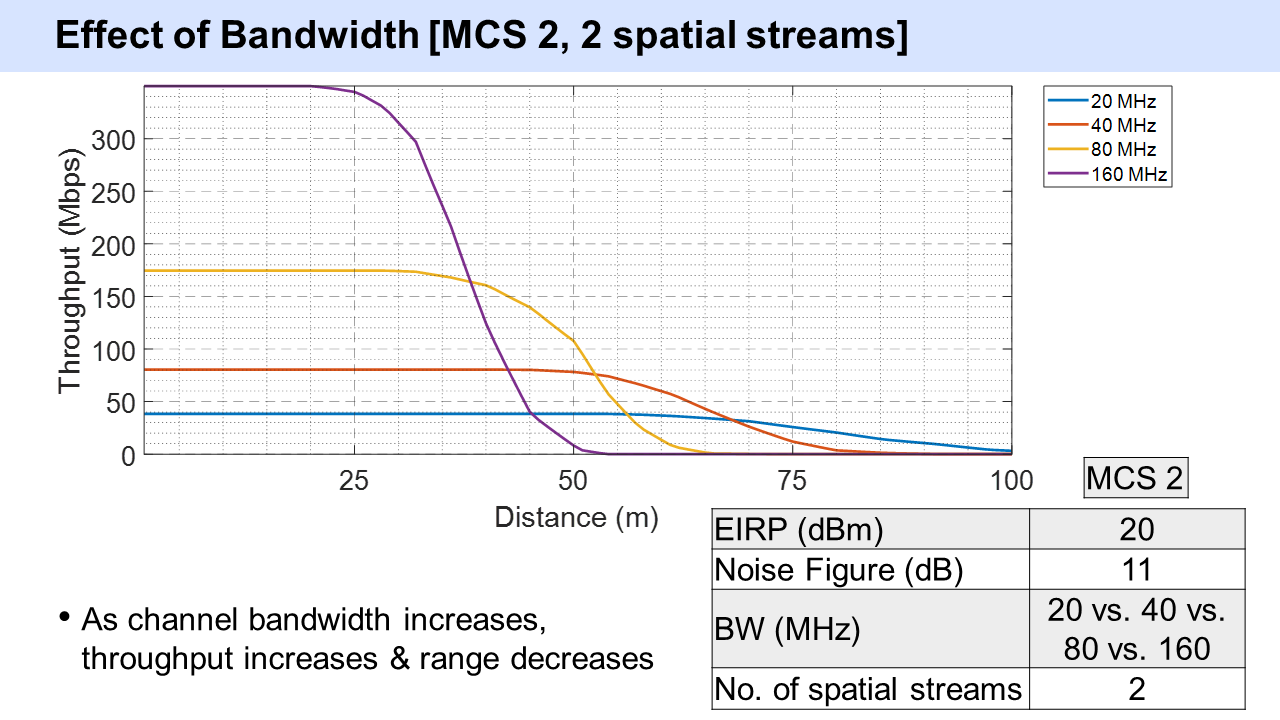Wi Fi Modelling
🗺 Location: Indian Institute of Science (IISc), Bangalore, India
📅 Duration: July 2020 - June 2021
💰 Funded by: Boeing
👩🏫 Guided by: Prof. Neelesh Mehta and Prof. Chandramani Singh
Objective Link to heading
- Modeling and simulation of physical and MAC layers of IEEE WLANs to obtain the performance metrics for various scenarios of an aircraft moving in an airport.
- Standards considered: 802.11n & 802.11ac at 2.4 GHz and 5 GHz
- Explore simulation of MAC layer rate adaptation algorithms
Performance Metrics and Modeling Scenarios Link to heading
Performance metrics Link to heading
- Throughput
- Latency
- Packet error rate
- Range
Models with simulation parameters Link to heading
- Scenario 1: Aircraft stationary at different distances from an access point
- Focus on standardized channel models for which verification is possible
- Scenario 2: Aircraft in motion towards the gate with a single access point
- Scenario 3: Aircraft in motion in taxi way covering multiple access points
Methodology Link to heading
- Step 1: Obtain PER vs. SNR plots for different MCSs
- Validate the simulation results by comparing it with results in standard documents
- Step 2: Obtain PER vs. distance plots for different EIRPs and noise floors
- Step 3: Develop rate adaptation algorithm and benchmark
- Step 4: Extend to Scenarios 2 and 3
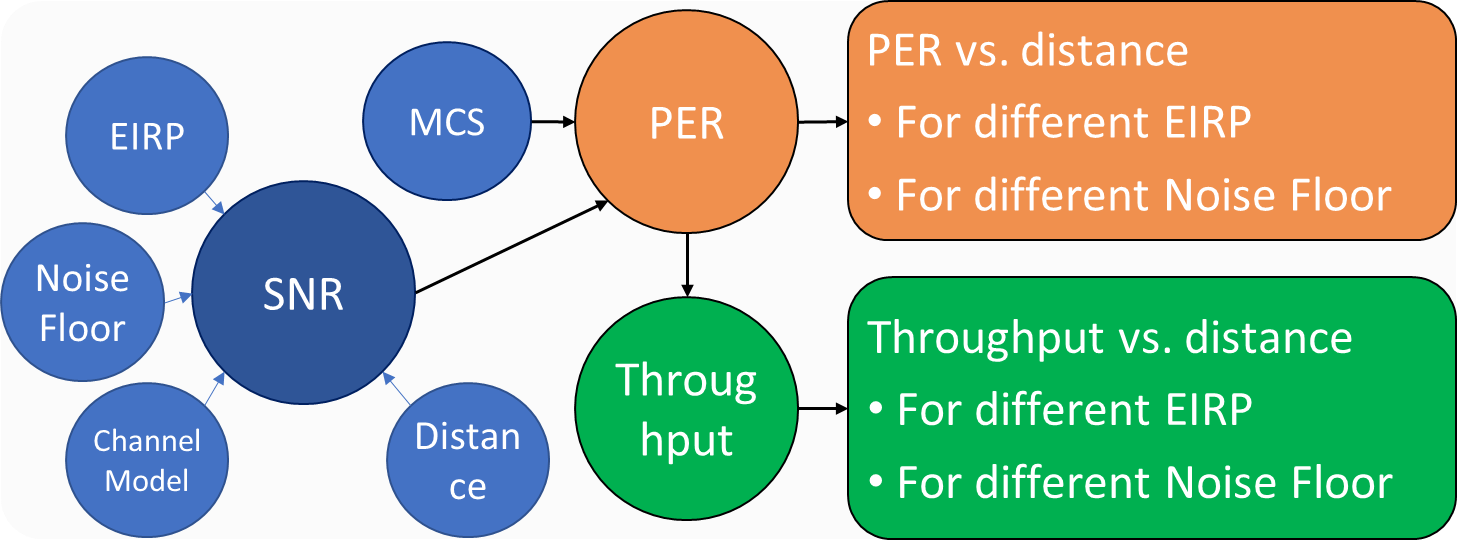
Data/plots generated and verification approach Link to heading
- PER and throughput for different SNRs obtained for all MCSs
- For 802.11n and 802.11ac
- Channel Models B, C, and D
- PER vs. SNR curves validated with those in “Next Generation Wireless LANs,” E. Perahia and R. Stacey, Cambridge Univ. Press
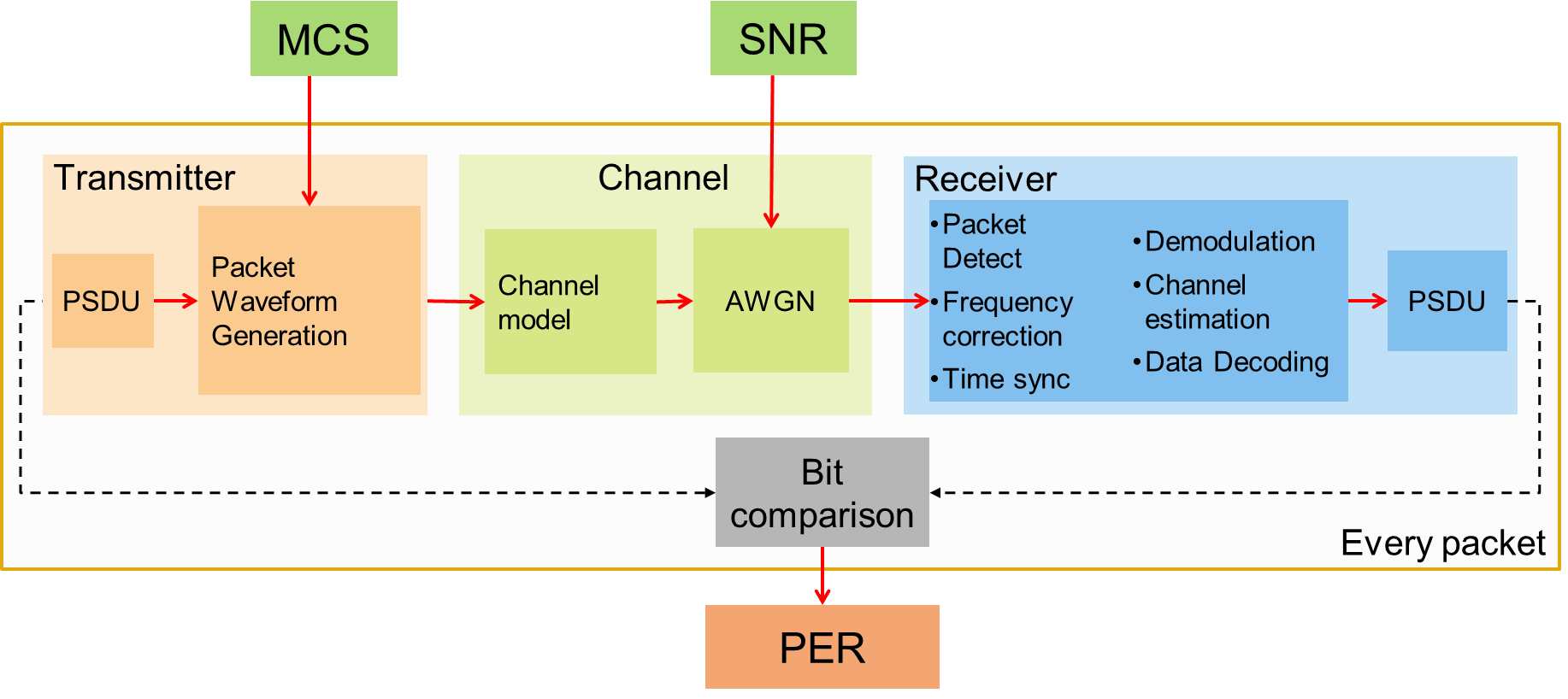
Transmit-receive-chain simulation for an MCS
Throughput calculation Link to heading
- Given a distance, EIRP, noise floor, the SNR is calculated
- PER is obtained using the data generated for different MCS
- Throughput is calculated using the rate and PER

Throughput calculation
Results Link to heading
Throughputs were calculated for the following parameters:
- EIRP: 18 & 20 dBm
- Noise figures: 11, 13.5, 16 dB
- Bandwidth: 20 & 40 MHz for 11n, and 20, 40, 80 & 160 MHz for 11ac
- 1x1, 2x2, 3x3 & 4x4 antenna configurations
- Spatial streams: 1, 2, 3 & 4
Throughput Results for IEEE 802.11n Link to heading
Throughput Results for IEEE 802.11ac Link to heading
Validation Link to heading
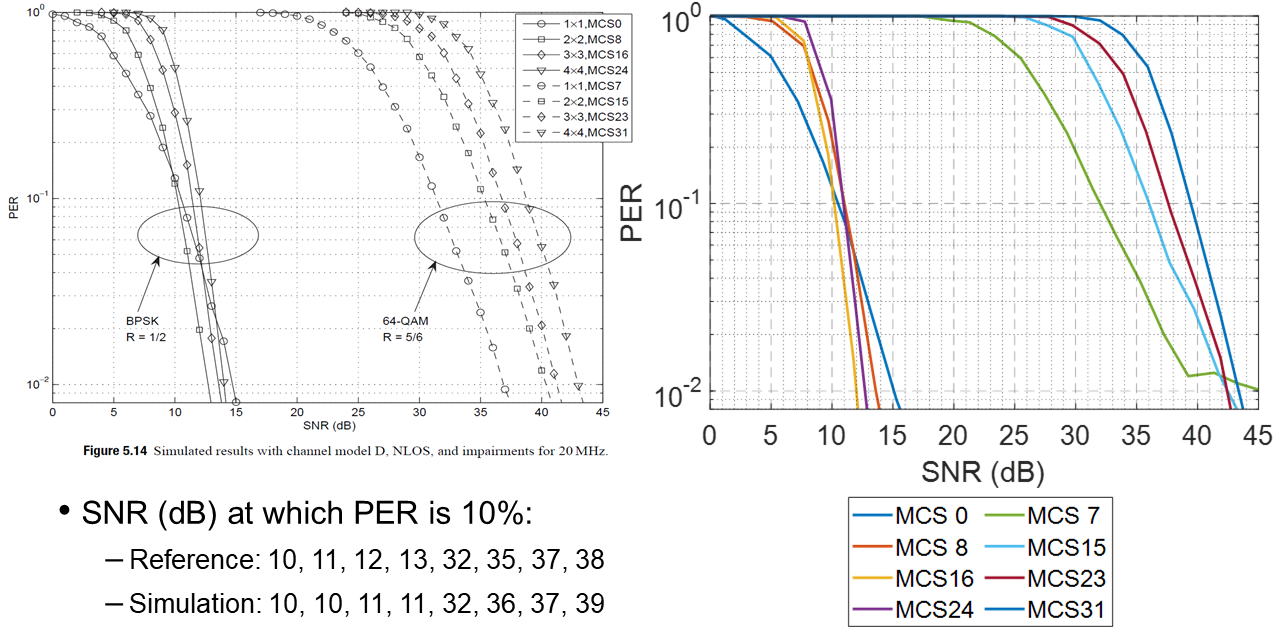
Validation: PER vs. SNR: Model D, 802.11n
Rate Adaptation Algorithms Link to heading
- The goal is to develop an algorithm that chooses rate, number of spatial streams and bandwidth.
- Several algorithms available in literature were studied:
- Minstrel: Default in Linux.
- MiRA (MIMO – Aware Rate Adaptation)
- RAMAS (Rate Adaptation for Multi-Antenna Systems)
- Damysus
- We chose the Minstrel HT algorithm and started developing simulation scripts in MATLAB.
Future Link to heading
I actively contributed to the project until June 2021 after which I supported it part-time. For more details about this work on simulating Rate adaptation algorithms and coexisting WLAN networks, visit this page.

